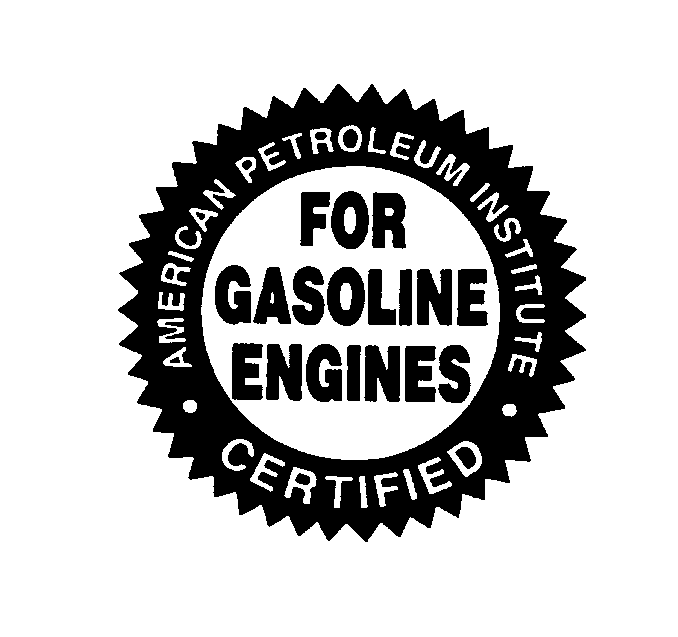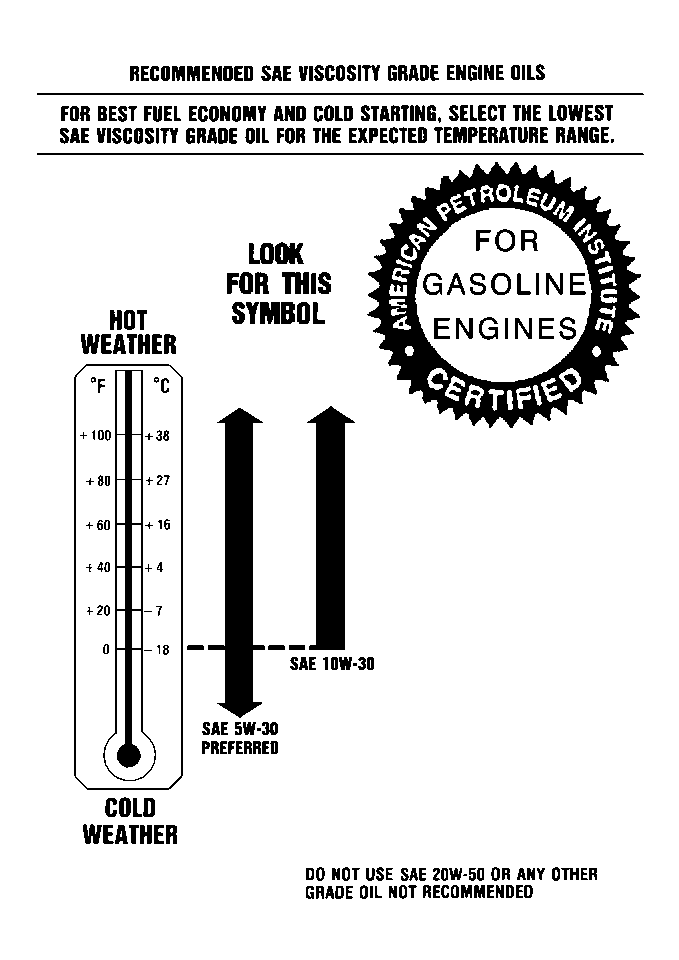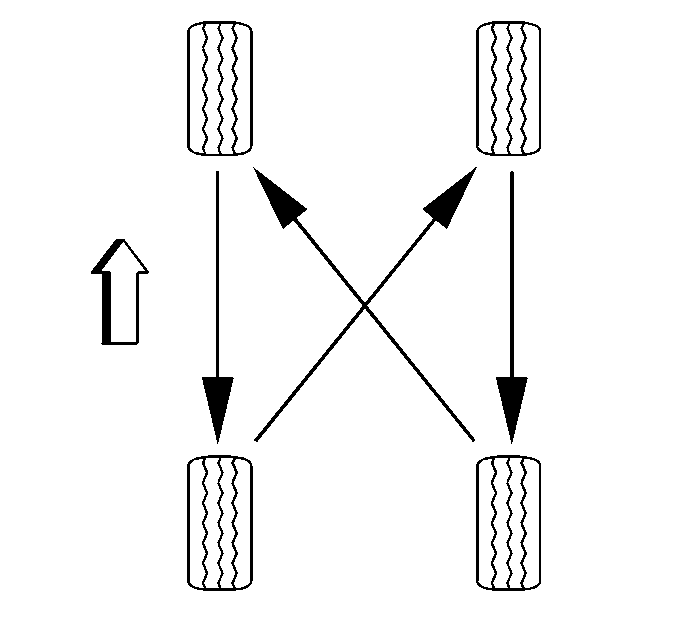For time and/or mileage intervals of scheduled maintenance items, refer to Maintenance Schedule .
The following text and illustrations describe the details of the required scheduled maintenance services.
For information on the proper fluids and lubricants to use, refer to Fluid and Lubricant Recommendations .
Engine Oil and Filter Change
For the engine oil and filter changing procedure, refer to Engine Oil and Oil Filter Replacement in Engine Mechanical - 3.8 L.
For information on the correct engine oil quality and viscosity, refer to the following:
Gasoline Engine Oil Quality

Notice: Use only engine oil with the American Petroleum Institute Certified for Gasoline Engines starburst symbol. Failure to use the recommended oil can result in engine damage not covered by the warranty.
The STARBURST symbol indicates that the oil has been certified by the American Petroleum Institute (API). Do not use any oil which does not carry the STARBURST symbol.
Gasoline Engine Oil Viscosity

Engine oil viscosity thickness has an effect on fuel economy and the cold-weather operation engine starting and oil flow. Lower viscosity engine oils can provide better fuel economy and cold-weather performance. However, higher temperature weather conditions require higher viscosity engine oils for satisfactory lubrication.
SAE10W-30 is best for the vehicle. However, use 5W-30 if the outside temperature is lower than 16°C (60°F). Do not use other viscosity oils, such as SAE 20W-50.
Notice: Using oils of any viscosity other than those recommended could result in engine damage. When choosing an oil, consider the range of temperatures the vehicle will be operated in before the next oil change. Then, select the recommended oil viscosity.
Important: If your vehicle is operated in an area where the temperature falls below -29°C (-20°F), consider using a SAE 5W-30 synthetic oil or a SAE 0W-30. Both will provide easier cold starting and better protection for the engine at extremely low temperatures.
Tire and Wheel Inspection and Rotation
Tires should be rotated every 6,000-8,000 miles (10 000-13 000 km).
Caution: Rust or dirt on a wheel, or on the parts to which it is fastened, can make wheel nuts become loose after a time. The wheel could come off and cause an accident. When you change a wheel, remove any rust or dirt from places where the wheel attaches to the vehicle. In an emergency, you can use a cloth or a paper towel to do this; but be sure to use a scraper or wire brush later, if you need to, to get all the rust or dirt off.

Check the tires for abnormal wear or damage. If irregular or premature tire wear exists, refer to Tire Diagnosis - Irregular or Premature Wear in Tires and Wheels.
Rotate the tires to equalize the wear and obtain maximum tire life. Refer to Tire Rotation in Tires and Wheels.
When rotating tires, always use the correct rotation pattern shown here.
Do not include the compact spare tire in tire rotation.
Reset the check tire pressure system, if equipped. Refer to Tire Pressure Monitor Procedure in Tire Pressure Monitoring.
After the tires have been rotated, adjusted the front and rear inflation pressures as shown on the Certification/Tire label. Ensure that all wheel nuts are properly tightened. Refer to Approximate Fluid Capacities .
Accessory Drive Belt Inspection
Inspect the accessory drive belts for the following:
| • | Cracks |
| • | Fraying |
| • | Wear |
| • | Proper tension |
Replace accessory drive belt as needed. Belts can have many small cracks in individual ribs without affecting the performance.
Automatic Transmission
Change both the fluid and the filter according to the maintenance schedule intervals.
For time and/or mileage intervals of scheduled maintenance items, refer to Maintenance Schedule .
For information on the proper fluids and lubricants to use, refer to Fluid and Lubricant Recommendations .
Spark Plug Replacement
Replace the spark plugs according to the maintenance schedule intervals.
For time and/or mileage intervals of scheduled maintenance items, refer to Maintenance Schedule .
Spark Plug Wire Inspection
Clean the spark plug wires and inspect for burns, cracks or other damage. Check the wire boot fit at the coils and at the spark plugs.
Air Cleaner Filter Replacement
Replace the air cleaner filter according to the maintenance schedule intervals with the correct type. For maintenance schedule information, refer to Maintenance Schedule .
